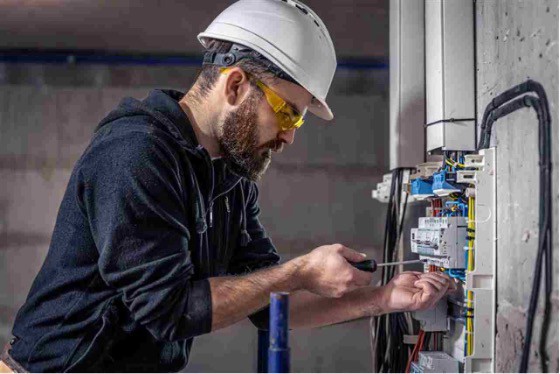The Importance of Cat 6A Cabling in Modern Workspaces
In today's high-performance workspaces, the transition to Augmented Category 6 (Cat 6A) cabling has become essential. Since the IEEE 802.3an 10GBase-T standard emerged, network professionals have faced the challenge of supporting exponentially growing bandwidth demands. At the frequencies required for 10-Gigabit transmission over copper, alien crosstalk becomes a significant issue. This interference occurs when signals from one cable couple onto adjacent cables, corrupting data transmission.
How Shielded Cabling Systems Work
Shielded cabling systems offer a solution to this problem. Unlike unshielded twisted-pair (UTP) Cat 6A solutions that tackle alien crosstalk through design innovations like increased cable separation and tighter twist rates, shielded systems employ a continuous shield, typically aluminum foil, braided copper, or both, surrounding the cable pairs. This creates an electromagnetic barrier that contains internal signals and blocks external interference.
Applications in Critical Markets
In markets such as healthcare, defense and aerospace, broadcasting, and media production, end users are particularly concerned about electromagnetic interference (EMI) and electromagnetic radiation interference (ERI) emitted by certain types of devices and sensitive equipment. These interferences can disrupt the operation of critical systems, leading to potential safety hazards and compromised performance. Shielded cabling systems provide better protection against these interferences, ensuring reliable and secure data transmission.
The Role of Bonding and Grounding in Shielded Cabling Systems
Proper bonding and grounding are essential for shielded cabling systems to perform optimally. They serve two critical functions:
1. Creating a robust path for voltage equalization and providing a return path for surge currents. Voltage spikes induced by lightning strikes can be safely channeled away from sensitive equipment through proper grounding. Grounding also stabilizes power fluctuations caused by motors and heavy equipment.
2. Preventing damage from electrostatic discharge, which can corrupt data transmissions.
Every connection in a grounding system must be intentionally designed to handle the currents it might face. Industry standards like ANSI/TIA-942-C, ANSI/TIA-607-E, IEEE 142-2007, and IEEE 1100-2005 provide the blueprint for this foundation. A thorough remediation plan guarantees electrical continuity throughout each rack using proper bonding hardware. All equipment and patch panels are bonded to the racks, creating a unified grounding reference.
Best Practices for Installation and Maintenance
Proper installation is crucial for the performance advantages of shielded cabling systems. Even the highest-quality components will underperform if the shield isn't properly terminated and grounded. When terminating the cable shield to the jack module, ensure 360-degree contact around the termination area to create a continuous conductive path. Grounding both ends of the shielded cabling is sometimes recommended for optimal performance but must be done properly. Best practices must be followed to avoid creating ground loops.
Requirements for Optimal Performance
Regular inspections and workplace testing are necessary to ensure the effectiveness of the grounding system. Inspect the telecommunications main grounding busbar (TMGB), telecommunications bonding backbone (TBB), and telecommunications grounding busbars (TGBs) for signs of corrosion, loose connections, and damage. A proper bond to ground leads to performance improvements, such as reduced network errors and latency. It also offers additional benefits, including reduced risk of equipment damage, better protection for personnel, and improved regulatory compliance.
By following these best practices for installation and maintenance, your bonding and grounding system becomes the invisible foundation that enables high-performance shielded structured cabling solutions, improving network reliability and helping you achieve maximum performance from your 10GBase-T infrastructure.



